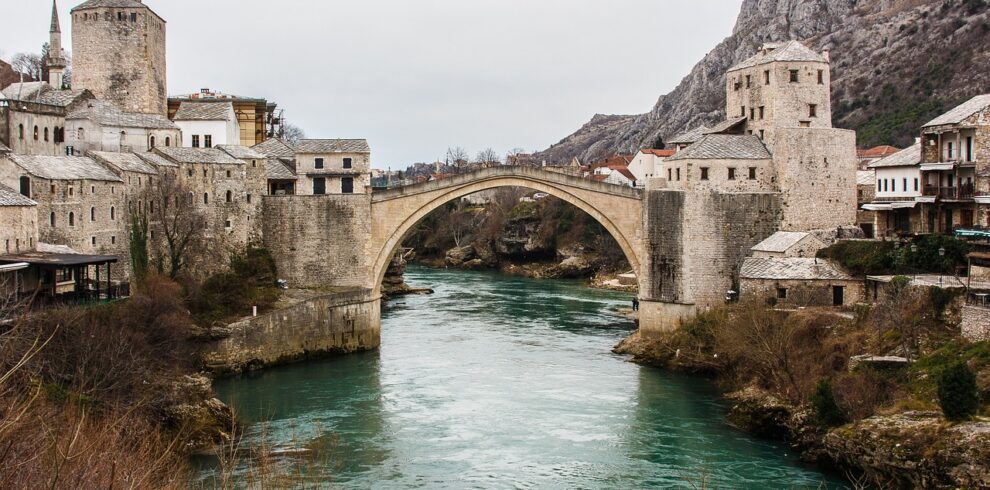Embark on a journey through the heart of the Balkans, exploring the breathtaking landscapes and rich cultural tapestry of Croatia, Slovenia, and Bosnia. From Zagreb’s vibrant streets to the historic charms of Dubrovnik, Sarajevo’s eclectic mix of cultures, and Slovenia’s serene Lake Bled, this tour showcases the best of natural beauty and historical wonders.
Stay in 4-star hotels, enjoy guided walking tours, and travel comfortably by bus through some of the most captivating destinations in the region. Perfectly timed for spring or autumn, this experience blends history, nature, and unforgettable memories across borders.
Trip Highlights:
🌟 Zagreb: Discover Croatia’s lively capital, rich in history and culture.
🌟 Sarajevo: Dive into Bosnia’s fascinating past and multicultural heritage.
🌟 Mostar: Admire the iconic Old Bridge and Ottoman-inspired Old Town.
🌟 Dubrovnik: Stroll the famed city walls of the “Pearl of the Adriatic.”
🌟 Split & Trogir: Explore Diocletian’s Palace and Trogir’s medieval charm.
🌟 National Parks: Be captivated by Krka Waterfalls and Plitvice Lakes.
🌟 Zadar: Experience Roman ruins and stunning Adriatic views.
🌟 Ljubljana & Lake Bled: Wander Slovenia’s charming capital and serene lakeside.
🌟 Postojna Cave: Venture into Europe’s breathtaking subterranean world
- Arrival to Zagreb airport
- Free time and lunch under own arrangement
- Zagreb city tour with english speaking local guide
- Visit: Zagreb Cathedral, Old Town
- Dinner at a local restaurant (Zlatni Medo or similar; http://pivnica.hr/ )
- Check in - hotel
About Zagreb:
For centuries, Zagreb has been a focal point of culture and science, and later also developed into a major centre of commerce and industry. Nowadays it is a predominantly outdoorsy town with a plethora of cultural and clubbing opportunities, which are some of the many reasons people of all ages flock to this dazzling capital.
Tourist attractions in Zagreb:

With its impressive display of Neo-Gothic artistry, the Cathedral of Zagreb was rebuilt by Viennese architects after an earthquake in 1880, and most of the money and creativity was spent on its two spires, which, interestingly enough, are not the same height. One is 104 meters tall while the other one is 105 meters.
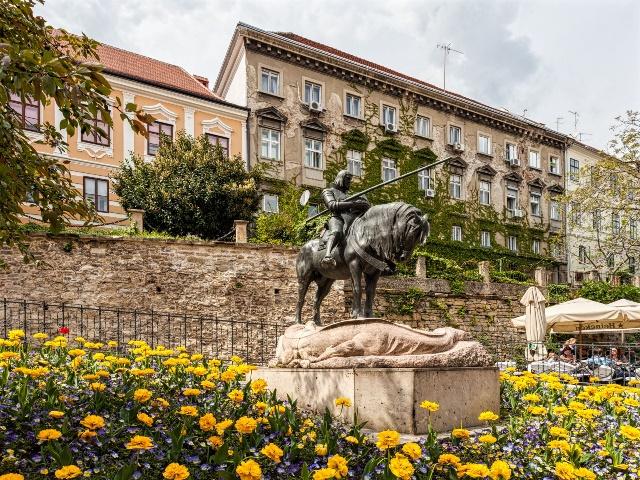
Gornji Grad is the upper town area of Zagreb. The main attraction here is the Stone Gate, an old entrance point to the city, now holding a shrine with a 16th-century statue of the Virgin Mary in a grille-covered niche. Many visitors come here to say a prayer or to light a votive candle.
- Transfer Zagreb-Sarajevo
- Lunch in a local restaurant (Harizma or similar)
- Sarajevo city tour with english speaking local guide
- Visit: War Tunnel, Latin bridge, Sebilj Square, Bursa Bezistan, Snajperska street
- Dinner at a local restaurant (Staklo or similar; https://ibes.ba/ )
- Check in - hotel
About Sarajevo: With its stunning natural setting, culturally diverse - and, at times, turbulent - history, and modern vibrancy, Sarajevo is a busy city which now actively welcomes visitors to its eclectic streets. The Islamic, Orthodox, Catholic and Judaic influences and religious traditions live on side by side here, in the formerly contested capital of Bosnia and Herzegovina set against the misty backdrop of the Dinaric Alps.
Tourist attractions in Sarajevo:
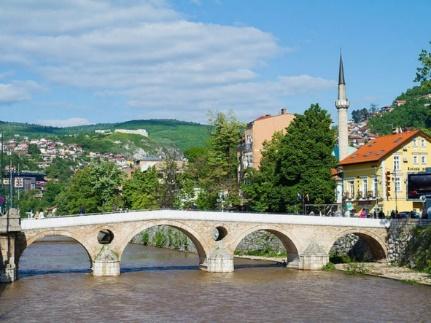
The birdge itself might not be the city's main landmark, but the events that unfolded here almost a century ago in 1914 led to the begining of WWI. See the exact location where Franz Ferdinand (the heir to the Austro-Hungarian throne) and his wife Sofia were assassinated on that decisive day.
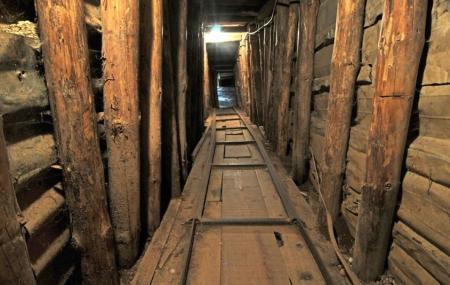
The Sarajevo tunnel was constructed by the citizens during the siege that took place between 1992 and 1995. Serbian forces had entirely cut off the city and this tunnel served as a link between the neighbourhoods Dobrinja and Butmir. This enabled food and aid to come in, and people to get out.
- Transfer Sarajevo-Mostar
- Mostar city tour with english speaking local guide
- Visit: Mostar Old Town, Mosque,
- Lunch at a local restaurant (Del Rio or similar; https://www.delriomostar.com/en/ )
- Visit Blagaj
- Transfer Mostar-Dubrovnik
- Check in and dinner at hotel
About Mostar: Mostar is the political, economical and cultural capital of the state of Herzegovina-Neretva. It was founded by Count Stjepan Kosača and the oldest written documents about the city date back to the first half of the 15th Century. Over the centuries Mostar has been occupied by many different civilizations, and each of them has left its mark. It was an important trading centre of the Ottoman Empire (Kunjundiluk), who's market places can stilll be visited today. During the trip we visit the Old Bridge, the partly-restored Turkish Bazaar, a mosque and a typical Turkish house.
Tourist attraction in Mostar and Blagaj:
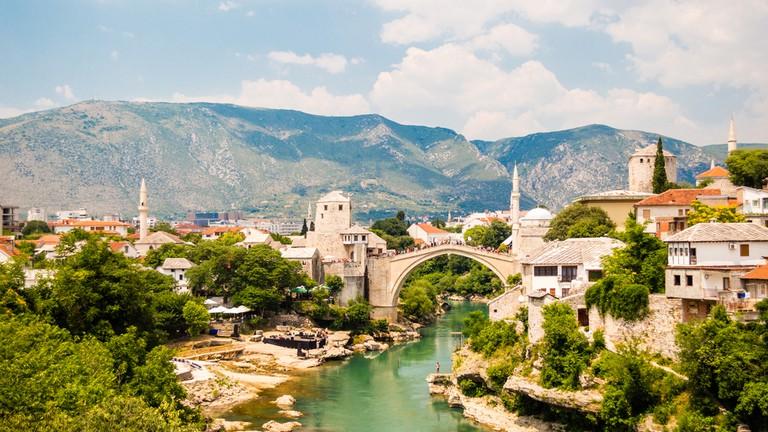
Mostar has been most famous for this beautiful historic Ottoman-style bridge. Rebuilding of The Old Bridge was completed in 2004, almost 11 years after its destruction, using some of its original pieces recovered from the Neretva river.
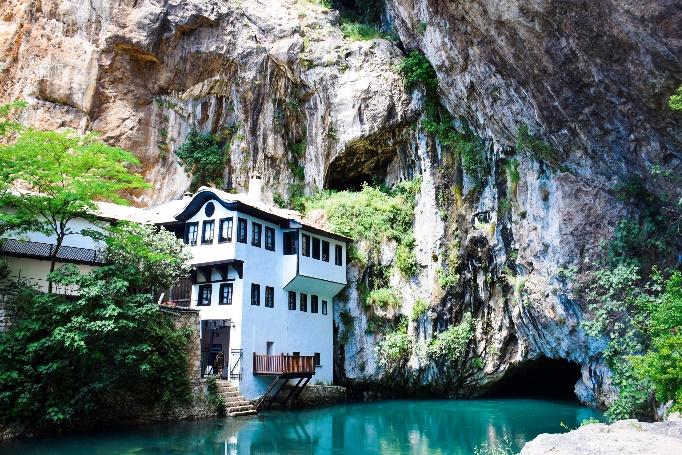
Forming Blagaj's signature attraction, the centrepiece of this complex of traditional stone-roofed buildings is half-timbered dervish house with wobbly rug-covered floors, carved doorways, curious niches and a bathroom with star-shaped coloured glass set into the ceiling. The dervishes follow a mystical strand of Islam in which the peaceful contemplation of nature plays a part, hence the tekke's idyllic positioning above the cave mouth from which the Buna River's surreally blue-green waters flow forth.
- Dubrovnik city tour with english speaking local guide
- Visit: City Walls, Dubrovnik Cable Car, Francisian Monastery, Old Town
- Free time and lunch under own arrangement
- Dinner at a local restaurant (Komarda or similar; https://restaurant-komarda.com/)
- Overnight
About Dubrovnik: The City of Dubrovnik is buzzing with life all year around. The astonishing beauty of the marble-clad Old Town is only to be found within the city walls. It is always full of people in the squares, in the small alleyways, in the cafés and in the bars. The clean beaches and the crystal-clear blue water surrounding the city walls of Dubrovnik captivate the visitor with their charm.
Tourist attractions in Dubrovnik:
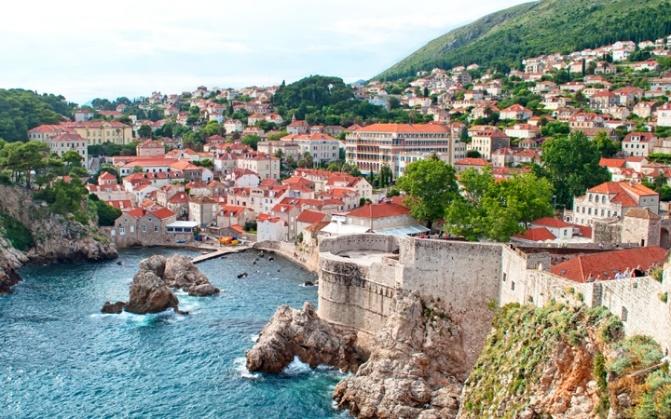
The whole of the Old Town in Dubrovnik is surrounded by the city walls which served as a defence against attack from the sea. The wall stretches nearly two kilometres and is as high as 25 meters in some places. A walk on the walls provides the ideal opportunity to enjoy the medieval and baroque splendours of the Old Town.
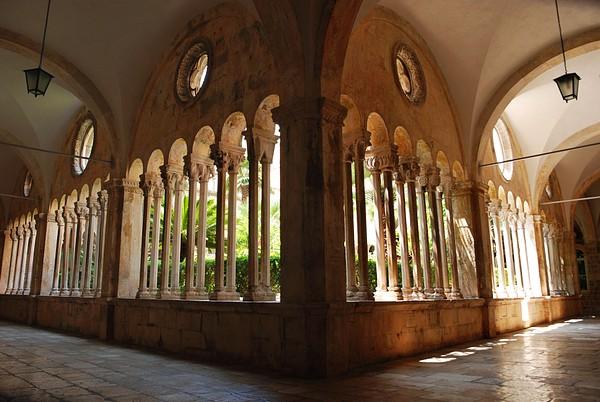
Franciscan Monastery Museum-The museum with the inventory from the old «Male Braće» pharmacy dating to 1317 is located in the cloister of the Franciscan monastery. The well-preserved furniture in the pharmacy dates to the 16th century, and the vases are from Sienna and Florence, dating to the 15th and 16th centuries. It also contains various presses, mortars, and an instrument for distilling water dating to the 14th century, as well as prescription manuscripts for making medicine, precise measurement, etc.
- Transfer Dubrovnik-Split
- Split city tour with english speaking local guide
- Visit: Diocletian's Palace and substructions, The Cathedral of St. Dominus, Riva
- Lunch at a local restaurant (Topolono or similar; http://www.restaurant-topolino.com/)
- Transfer Split-Trogir
- Visit: Trogir Old Town, Kamerlengo Tower
- Transfer Trogir-Zadar
- Check in and dinner at hotel
About Split:
He coastline of the Atlantic Sea cradles the elegance of the historical city of Split.
Chosen by the Roman emperor Diocletian as his city of residence, Split accommodates his Palace, an over 1700 years old giant that comprehends an intricate complex of quaint alleys and square. Due to its vastness and impressively excellent conservation, the ancient colossus can be referred to as a city within a city. While the charm of the city's historical sites captivates the multitude of holiday-makers who flock to Split throughout the hot Croatian summer, the unspoiled nature and crystalline waters just make them fall in love. The people of Split claim that their city is "the most beautiful one in the world and beyond," and the well spirited Split aims to convince you of this! The city is full of life and soul, and the friendly local people of Split are waiting to welcome you with open arms. Only a few cities in the world can offer such variety of entertainment and excursions in their closest surroundings as Split.
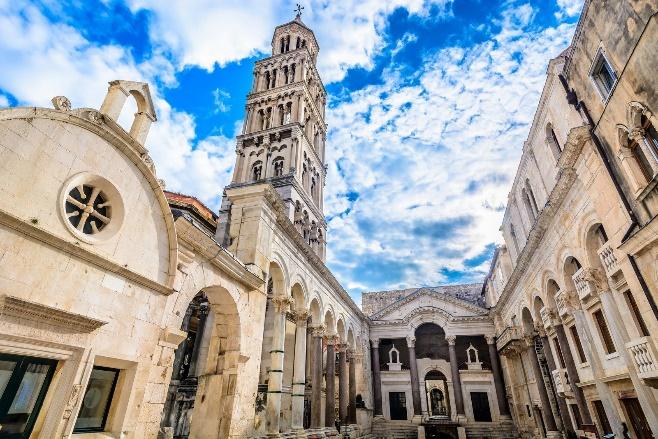
The Palace is the city´s pride and houses the alleys and squares that compose the Old Town. Built by the Emperor Diocletian back to the 305 AD, it boasts an impressive figure and a well-preserved building. As you walk through the Bronze Gate, a stunning view of the Palace will be disclosed to the eyes, revealing the magnificent ancient fortress.
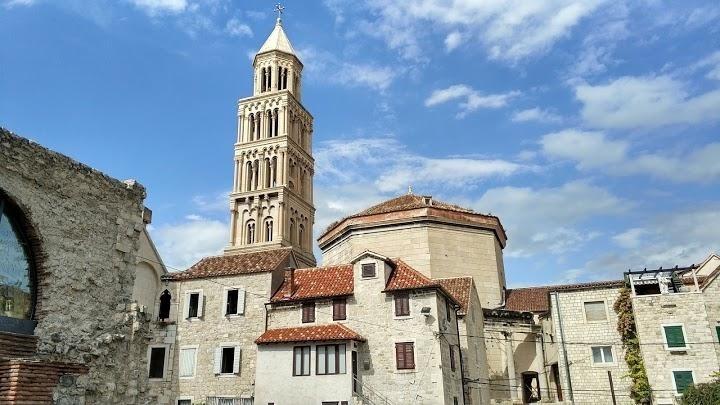
The Palace is the city's pride and houses the alleys and squares that compose the Old Town. Built by the Emperor Diocletian back to the 305 AD, it boasts an impressive figure and a well-preserved building. As you walk through the Bronze Gate, a stunning view of the Palace will be disclosed to the eyes, revealing the magnificent ancient fortress.
- Zadar city tour with english speaking local guide
- Visit: Zadar Cathedral, St. Donatus’ Church
- Lunch in a local restaurant (2 Ribara or similar; https://2ribara.com/nas-jelovnik/)
- Transfer Zadar-Krka
- Visit: National Park Krka
- Overnight
About Zadar:
Almost entirely surrounded by the warm waters of the Adriatic, Zadar may not be large, but it is bursting with personality. A thoroughly cosmopolitan space, the city is full of extraordinary architecture and offers some of the best sailing around Zadar’s archipelago and along the western coast of the Dalmatia region.
Tourist attractions in Zadar and Krka:
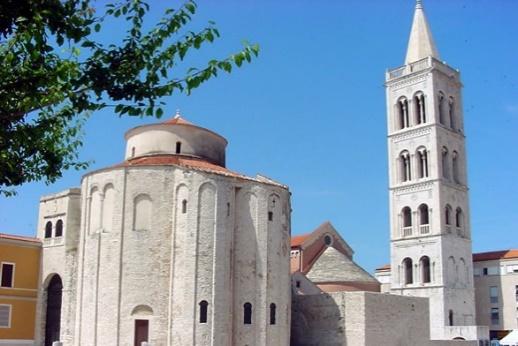
St. Donatus' church is considered by many the
symbol of Zadar. This majestic circular building is one of the finest examples of Byzantine style in the whole country. Nowadays it's no longer used as a church but as venue for cultural and musical events.

The park is located along the middle-lower course of the Krka River in central Dalmatia, in Šibenik-Knin county, downstream Miljevci area, and just a few kilometers northeast of the city of HYPERLINK
"https://en.wikivoyage.org/wiki/%C5%A0ibenik" o "Šibenik" Šibenik. It was formed to protect the Krka River and is intended primarily for scientific, cultural, educational, recreational, and tourism activities. Krka National Park is the seventh national park in Croatia and was proclaimed a national park in 1985.
- Transfer Zadar-Plitvice
- Visit: National Park Plitvice Lakes and Rastoke Village
- Lunch at a local restaurant (Plitvicki Dvori or similar; http://www.plitvicki-dvori.com/en/)
- Transfer Plitvice-Opatija
- Check in and dinner at hotel
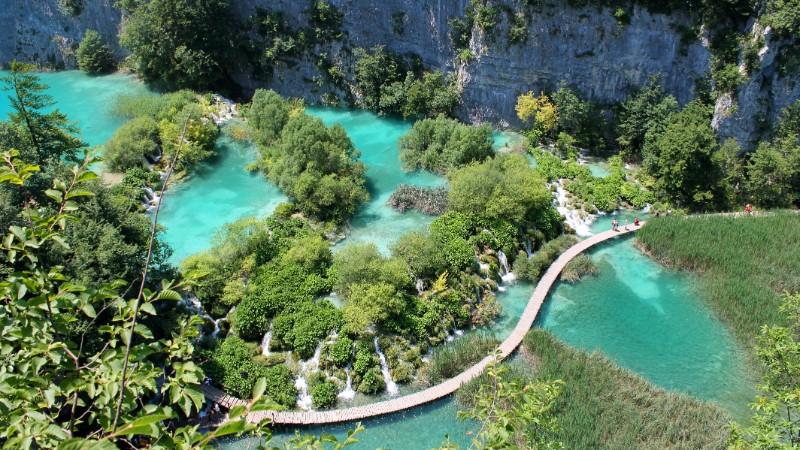
Plitvice Lakes National Park (Nacionalni park Plitvička jezera) in Croatia is one of the most beautiful natural sights in Europe. Due to its beauty and significance, this system of 16 interlinked lakes and a large forest complex around it were set aside as a national park in 1949. In 1979 the park was inscribed on the UNESCO World Heritage site List.
- Transfer Opatija-Postojna
- Visit: Postojnska Cave with lunch
- Transfer Postojna-Ljubljana
- Ljubljana city tour with english speaking local guide
- Dinner at a local restaurant (Allegria or similar; http://www.allegria.si/)
- Check in - hotel
About Ljubljana:
Ljubljana, the capital of Slovenia, is the nexus of Europe. Namely, the unique character of Ljubljana is made up of the influences of various cultures, while its distinctive image is the result of a diverse and alluring history. Ljubljana is a picturesque city of romantic bridges, co-existing in harmony with its own river; a city with an exquisite architecture, full of vibrant cultural creativity. Ljubljana’s ancient centre at the foot of the hill, overlooked by Ljubljana Castle, is relatively small and easily accessible on foot or by bicycle. The lush vegetation surrounding the city guarantees plenty of outdoor hiking, cycling and recreational opportunities.
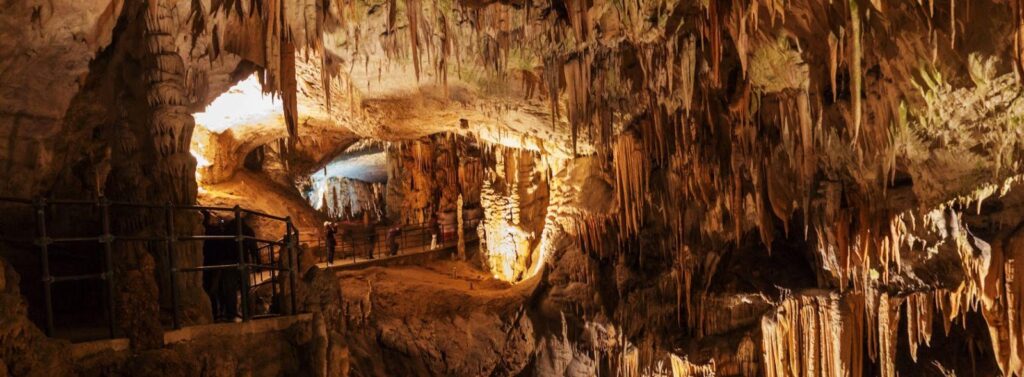
Postojna Cave is the best-known cave in the world. It is also the greatest tourist attraction in Slovenia and one of the world's largest karst monuments. A fantastic web of tunnels, passages, galleries and halls, the astonishing diversity of Karst features as well as easy access are certainly the main reasons for such popularity of the cave and a large number of visitors.
- Transfer Ljubljana-Bled
- Visit: Bled Lake and Castle with lunch, passing trough Bohinj
- Transfer Bohinj-Ljubljana
- Dinner at a local restaurant (Hisa pod gradom or similar; https://www.hisapodgradom.si/)
- Overnight
A picturesque white and red castle enclosed by a Romanesque wall with parapets, ramparts, and towers. The current
incarnation of the castle dates from the 17th century and was restored in the 1950s. The upper courtyard includes a 16th-century chapel decorated with frescoes from 1700 and includes a painting of Henry II conferring Bled to Bishop Albuin.
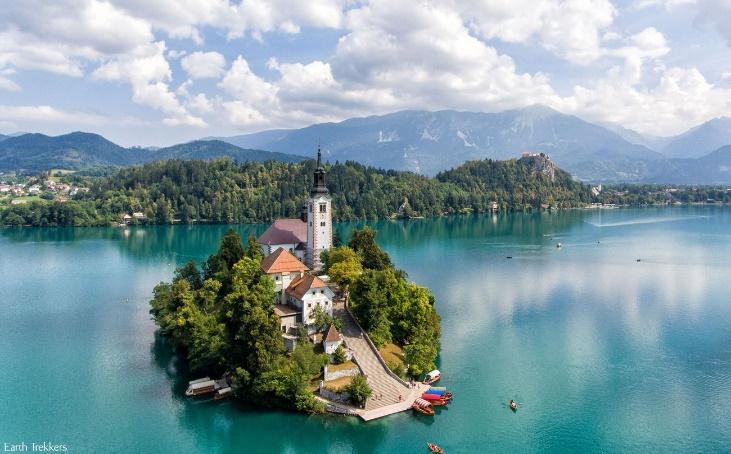
- Transfer to airport
- Departure


